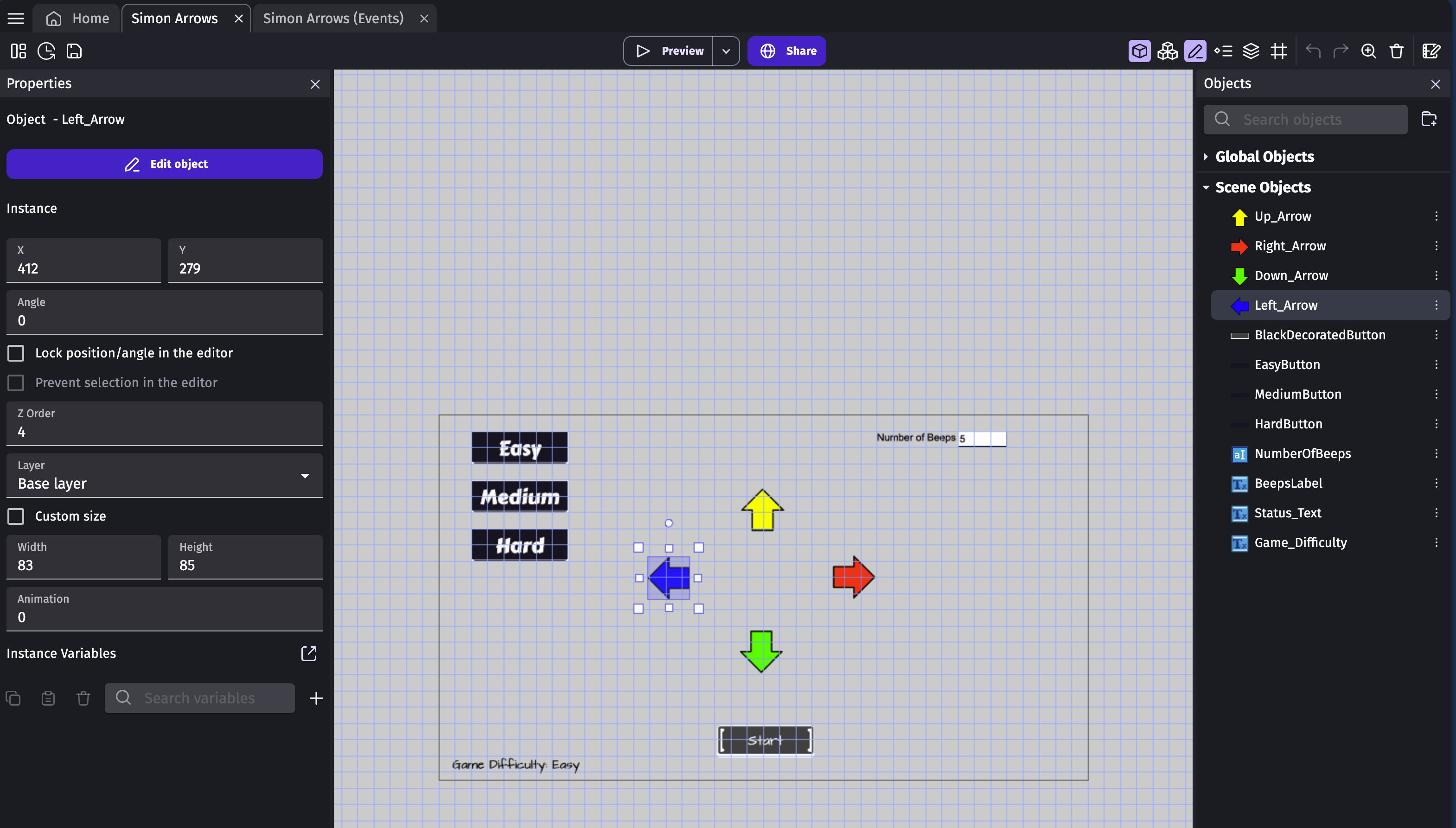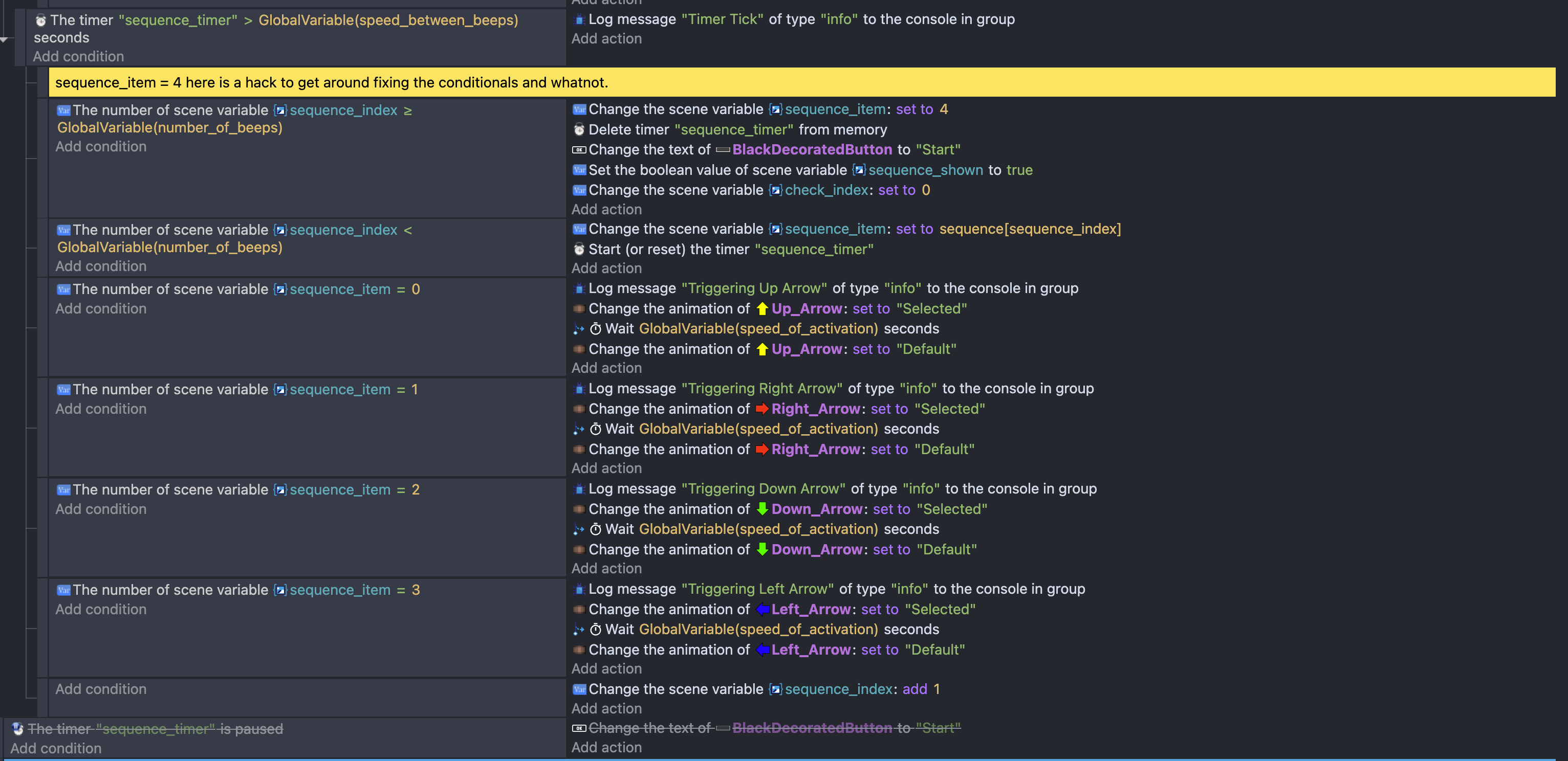Let's do some "Game Development"
by cthos
About 7 min

Kit8.net @ Shutterstock #1498637465
The other day, a friend asked me a complicated question wrapped in what seems like a simple question: “How long would it take to make some simple mini-games that you could slap on a web page?”
My answer, as many seasoned developers will be familiar with (and of course it’s coming out of the architect’s mouth) was “It depends on the game and the developer. I could probably churn out something pretty good in a few days, but it’d take someone more junior longer”.
This set off the part of my brain that really wants to test out just how fast I could do a simple game in engines that I’m not familiar with. Thus, I decided to ignore my other responsibilities and do that instead! Mostly kidding about the responsibilities thing, I’m ahead of my writing goals for Nix Noctis, so I had a couple of hours to spare (and a free evening).
The Challege
Permalink to “The Challege”How long would it take to make a simple “Simon” game in GDevelop: a “no code” game engine? I wanted to start with GDevelop for a few reasons:
- I wanted to simulate the experience someone with little coding experience would encounter. Knowing that I’ve internalized some concepts that would make the experience easier (or, in some cases, harder) for me.
- You can run the editor in a web browser, and that’s bonkers.
- I want to “pretend” to be a beginner; only use basic and easily searchable features.
- I mean, I am a beginner at game dev, but I do understand several the concepts.
With those things in mind, I set out to remake Simon. Here were my design constraints:
- Four Arrows, controllable by clicking them or via the keyboard.
- Configurable number of “beeps” in the sequence
- The game would not increase by one each time (though it easily could)
- Three Difficulty levels which control the speed that the sequence is shown
- Bonus points for sound effects
Headlong into GDevelop
Permalink to “Headlong into GDevelop”REMEMBER! I’m a beginner at GDevelop. You’re likely going to see something and say “hey that’s dumb, you should have done it another way”. Yes. Exactly.
The editor experience in GDevelop is actually really nice, especially when you can just get into it via clicking into a browser. I found adding elements to the page very intuitive. Sprites are simple, and adding animation states to them is effortless. Creating the overall UI took me probably 20 to 30 minutes to iteratively build out a structure I was happy with, it was fast. Another fun thing I discovered was that they have [JFXR] built into the editor, and that was a delight.

What was not so quick was wiring up the game logic to the elements on the page. I’ve looked at some GDevelop tutorials before, and if you’re treading a path that’s covered by one of their “Extensions”, you’re going to have a great time. A 2D platformer will be a breeze because you can simply attach a behavior to the sprites in your game and go. There are a bunch of tutorials on making a parallax background for really cool looking level design. Simple!
What is not so simple is if you fall outside those behaviors and need to start interacting with the “no code” editor. On one hand, the no code editor is nice! The events and conditionals are intuitive if you’re approaching it in certain ways. They even let you add JS directly if you know what you’re doing (though they recommend against it). On the other hand, I can see this getting quickly messy. In my limited experience with the engine, I could not find a good way to reuse code blocks. This will come up later.
Sidebar, dear reader, I believe this is where they would say “you should make a custom behavior to control this”. I’m not sure a beginner would think to do this, but I thought about it and said, “I’ll just duplicate the blocks”.

As I worked through this process, I ran into a number of weird stumbling blocks that slowed down my progress while I tried different things.
Things that were surprisingly straightforward
Permalink to “Things that were surprisingly straightforward”Variables
Permalink to “Variables”GDevelop has many layers of variables, Global, Scene, Instance, and so forth. Easy to understand, fairly easy to access and edit.
Setting up the Simon Sequence
Permalink to “Setting up the Simon Sequence”Were I making this game in pure JS, generating the sequence would be a pretty “simple” one-liner (It’s not that simple, but hey, spread operator + map is fun! I’d expand this in a real program to be easier to understand):
// Fill a new array of size number_of_beeps with a digit between 0 and 3 to represent arrow directions
let sequence = [...Array(number_of_beeps)].map(() => Math.floor(Math.random() * 4));Generating the sequence was remarkably easy once I figured out how to do loops in GDevelop; they’re hidden in a right-click menu (or an interface item), but the “Repeat x Times” condition is precisely what we needed.

Likewise, doing the animation of the arrows was pretty direct. All you need to do is change the animation of the arrow, use a “wait” command, and then turn it back. Easy!

Turns out it’s not actually that easy. The engine (as near as I can tell) is using timeouts under the hood which means they’re not fully blocking execution of other tasks in sibling blocks while this is happening. Which means…
Wait for x Seconds is weird / doesn’t work right
Permalink to “Wait for x Seconds is weird / doesn’t work right”Okay, so when you’re playing Simon, the device will beep at you, light up for a non-zero number of seconds, and then dim. It should do that for each light. If you’ve never experienced this wonder of my childhood, watch this explanatory video from a random store:
Now that we know how that works, we want to emulate that in GDevelop. The first thing I tried was to simply put the “Wait” block at the end of a For...In Loop. Yeah, remember what I said about timeouts? Those don’t block. The loop would just continue and totally ignore the wait. I think that’s a major pitfall for new devs, they’re not going to understand the nuance of how those wait commands function under the hood.
The second thing I tried is the “Repeat Every X Seconds” extension to do the same thing. I couldn’t get it to even fire, and I still don’t know why.
Anyhow, I settled on using a timer to do the dirty work. Here’s how our “Play the sequence loop” wound up looking at the end:

Conditionals / Keyboard Input Combined with Mouse Clicks
Permalink to “Conditionals / Keyboard Input Combined with Mouse Clicks”There’s another thing I could not figure out. I wanted to have both mouse clicks and keyboard input control the “guess” portion of the code, so I sensibly (imo) attempted to combine those into a single conditional. That wound up being…very weird, and there’s still a bug related to it.
First off, there are AND and OR conditionals. It took me a bit to find them, but they do exist. So, with a single OR conditional and a nested AND conditional, I set out with this:

This mostly works. However, for whatever reason, if you use the keyboard to input your guess, the arrow animation does not play. I do not know why. It works if you click. I can prove the conditional triggers in either case. It’s just that the animation does. Not. Work. Maybe one day I’ll figure it out, but I chose not to.
GDevelop Wrap Up
Permalink to “GDevelop Wrap Up”Struggling past some of those hurdles, it took me about 5 hours to meet my original design goals in GDevelop. Not terrible for not knowing anything about GDevelop besides that it exists.
Here’s a video of the final product:
Okay! We’re done here. Post over.
Nah, you all know me, I couldn’t stop there.
We're doing it again in Godot!
Permalink to “We're doing it again in Godot!”After I’d done the initial experiment, I was curious if I could work faster in a game engine that has real scripting support.
The short answer is “yes”. It took me about 2.5 hours to complete the same task in Godot (with some visual discrepancies). I think the primary speed gain was from the fact that the actual game logic was much more intuitive to me and the ability to wire up “signals” from one element to the main script code made it much faster to do some of the tasks I was fighting in GDevelop.
Godot also has an await keyword which blocks execution like you’d expect it to, which is outstanding.
I did run into one major issue that I had to do a fair amount of research to solve:
AnimatedSprite2D “click” tracking is surprisingly difficult
Permalink to “AnimatedSprite2D “click” tracking is surprisingly difficult”The only issue I had was that when I needed to determine if the user had clicked on an arrow, I had to jump through some interesting hoops to detect if the mouse was over the arrow’s bounding box.
While regular sprites have a helper function get_rect() which allow you to figure out its Rect2D dimensions, AnimatedSprite2Dvery much do not (you have to first dig into the animations property, and then grab the frame it’s currently on, and then you have to get its coordinates and make your own Rect2D. Gosh, I’d have loved a helper function there).
I think the expectation is you’d have a KinematicBody2D wrapping the element, but as the arrows are essentially UI, that didn’t make any sense to me. I’ll need to dig a bit further into how Godot expects you to build a UI to do all of that, but hey, I got it working relatively quickly.
Theming
Permalink to “Theming”Changing the text of everything in the scene was really bizarre due to how it’s abstracted via a “Theme” object that you attach to all the UI elements? Still haven’t quite figured that out. It was really easy in GDevelop. Not so much in Godot.
Godot Wrap Up
Permalink to “Godot Wrap Up”Yeah, so, I liked working in Godot more because it was easier to make the behaviors work, and I was getting exhausted at the clunkiness of the visual editor. Here’s the final product:
Conclusion
Permalink to “Conclusion”For me, working in both of these engines for fun was a positive experience and I can see myself using GDevelop for some quick prototyping, but personally, I like Godot’s approach to the actual scripting portions of the engine. Because I have a lot of software development experience, it’s much easier for me to just write a few lines of code over having to navigate the quirks of the interface.
I think GDevelop is perfectly serviceable, though. It looks like everything in the engine does have a JS equivalent, so you really could just write JS if you wanted to. If they exposed that more cleanly, I think it’d be pretty great for many 2D needs.
But I’m not a game dev, this is just me tinkering around and giving some impressions. Go try them out for yourself, they’re both easy to get started with!
